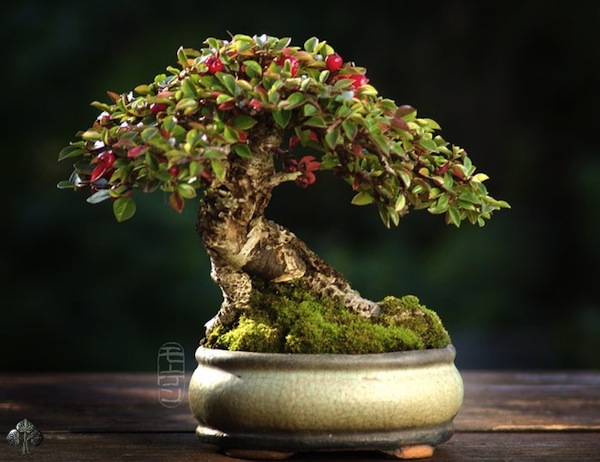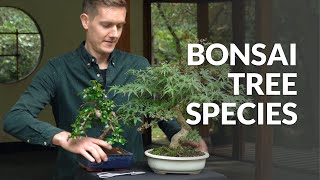Cotoneaster Bonsai Care guidelines
Depending on the exact species, most of them prefer a place in full sun during the growing season, but they should be placed in semi-shade on the hottest summer days. Although Cotoneasters are frost hardy when they are planted into the ground, they should be protected from frost when they are planted in small containers.
The Cotoneaster needs a lot of water in summer, but it can survive short droughts. Even plants whose leaves have died due to lack of water can recover in some cases and produce new leaves. In winter the roots should be kept only slightly moist. Overwatering can cause root rot. Cotoneasters are not demanding in regard of water quality. Continue reading about watering Bonsai trees.
Watering
Free lecture from the Beginners CourseDuring the growing season feed the tree every week with liquid fertilizer or apply a solid organic fertilizer every four weeks. Use a balanced product with sufficient phosphorous, potassium and micronutrients to promote flowers and fruit.
Cotoneasters take constant pruning very well. Older branches are best pruned in spring. Young shoots are constantly trimmed during the growing season. Cotoneasters can be wired at any time of the year. Younger branches are quite flexible, older ones become quite stiff and can snap when you try to bend them heavily, but in most cases they can be shaped with guy wires. Continue reading about pruning Bonsai trees.
Young trees can be repotted yearly, in early spring. Older cotoneasters are repotted every two or three years. The roots can be pruned considerably. Use a well-draining standard soil mix. Cotoneasters can tolerate a wide range of pH values between acidic and alkaline. Continue reading about repotting Bonsai trees.
Cotoneasters grow easily from seed in spring or from cuttings in mid-summer. Air-layering is also possible.
Cotoneasters can be bothered by aphids, scale, caterpillars, borers, spider mites, fire blight, bacterial blight, powdery mildew and diverse leaf spot and root rot fungal diseases. In some regions, fire blight is a great problem. Cotoneaster horizontalis and some cultivars of Cotoneaster microphyllus seem to be less prone to fire blight. If pests or diseases occur, use a specific pesticide or ask a professional gardener for help in severe cases. For more detailed information on these techniques, check out our Bonsai tree care section.

Cotoneaster Bonsai
General information about the Cotoneaster Bonsai tree
Cotoneasters are often used for hedges, ornamental plants and topiary and are also very popular for bonsai. Good raw material can often be found in gardens, garden centers or on old graves. The Cotoneaster is a good choice for attractive bonsai trees, especially in small sizes like Shohin, Kifu or Chuhin, and it is also very recommendable for beginners. If you need help identifying your tree, take a look at our Bonsai tree identification guide.





